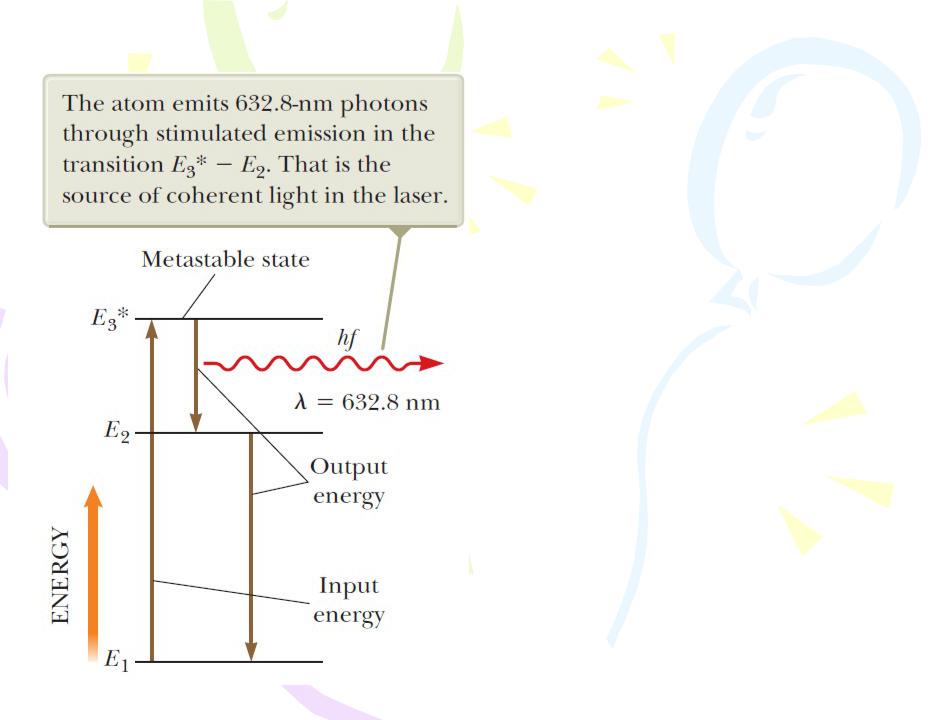
- •Course of lectures «Contemporary Physics: Part2»
- •Physical Interpretation of the Quantum Numbers
- •Physical Interpretation of the Quantum Numbers
- •Physical Interpretation of the Quantum Numbers
- •Physical Interpretation of the Quantum Numbers
- •Physical Interpretation of the Quantum Numbers
- •Physical Interpretation of the Quantum Numbers
- •Physical Interpretation of the Quantum Numbers
- •Physical Interpretation of the Quantum Numbers
- •The Exclusion Principle and the Periodic Table
- •The Exclusion Principle and the Periodic Table
- •The Exclusion Principle and the Periodic Table
- •The Exclusion Principle and the Periodic Table
- •The Exclusion Principle and the Periodic Table
- •More on Atomic Spectra: Visible and X-Ray
- •More on Atomic Spectra: Visible and X-Ray
- •More on Atomic Spectra: Visible and X-Ray
- •More on Atomic Spectra: Visible and X-Ray
- •More on Atomic Spectra: Visible and X-Ray
- •More on Atomic Spectra: Visible and X-Ray
- •More on Atomic Spectra: Visible and X-Ray
- •Spontaneous and Stimulated Transitions
- •Spontaneous and Stimulated Transitions
- •Spontaneous and Stimulated Transitions
- •Lasers
- •Lasers
- •Lasers
- •Lasers
- •Lasers
- •Lasers
- •Lasers
- •Lasers

More on Atomic Spectra: Visible and X-Ray
X-Ray Spectra
A Moseley plot of  versus Z, where λ is the wavelength of the Kα x-ray line of the element of atomic number Z.
versus Z, where λ is the wavelength of the Kα x-ray line of the element of atomic number Z.
From this plot, Moseley determined the Z values of elements that had not yet been discovered and produced a periodic table in excellent agreement with the known chemical properties of the elements. Until that experiment, atomic numbers had been merely placeholders for the elements that appeared in the periodic table, the elements being ordered according to mass.

Spontaneous and Stimulated Transitions
This process is called stimulated absorption because the photon stimulates the atom to make the upward transition.

Spontaneous and Stimulated Transitions
Once an atom is in an excited state, the excited atom can make a transition back to a lower energy level, emitting a photon in the process. This process is known as spontaneous emission because it happens naturally, without requiring an event to trigger the transition. Typically, an atom remains in an excited state for only about 10-8 s.

Spontaneous and Stimulated Transitions
In addition to spontaneous emission, stimulated emission occurs. In this process, the incident photon is not absorbed; therefore, after the stimulated emission, two photons with identical energy exist: the incident photon and the emitted photon.

Lasers
The primary properties of laser light that make it useful in these technological applications are the following:
•Laser light is coherent. The individual rays of light in a laser beam maintain a fixed phase relationship with one another.
•Laser light is monochromatic. Light in a laser beam has a very narrow range of wavelengths.
•Laser light has a small angle of divergence. The beam
spreads out very little, even over large distances.

Lasers
We have described how an incident photon can cause atomic energy transitions either upward (stimulated absorption) or downward (stimulated emission). The two processes are equally probable. When light is incident on a collection of atoms, a net absorption of energy usually occurs because when the system is in thermal equilibrium, many more atoms are in the ground state than in excited states. If the situation can be inverted so that more atoms are in an excited state than in the ground state, however, a net emission of photons can result. Such a condition is called population inversion. Population inversion is, in fact, the fundamental principle involved in the operation of a laser (an acronym for light amplification by stimulated emission of radiation). The full name indicates one of the requirements for laser light: to achieve laser action, the process of stimulated emission must occur.

Lasers
For the stimulated emission to result in laser light, there must be a buildup of photons in the system. The following three conditions must be satisfied to achieve this buildup:
•The system must be in a state of population inversion: there must be more atoms in an excited state than in the ground state. That must be true because the number of photons emitted must be greater than the number absorbed.
•The excited state of the system must be a metastable state, meaning that its lifetime must be long compared with the usually short lifetimes of excited states, which are typically 1028 s. In this case, the population inversion can be established and stimulated emission is likely to occur before spontaneous emission.

Lasers
• The emitted photons must be confined in the system long enough to enable them to stimulate further emission from other excited atoms. That is achieved by using reflecting mirrors at the ends of the system. One end is made totally reflecting, and the other is partially reflecting. A fraction of the light intensity passes through the partially reflecting end, forming the beam of laser light.

Lasers
One device that exhibits stimulated emission of radiation is the helium–neon gas laser. Figure is an energy-level diagram for the neon atom in this system. The mixture of helium and neon is confined to a glass tube that is sealed at the ends by mirrors. A voltage applied across the tube causes electrons to sweep through
the tube, colliding with the atoms of the gases and raising them into excited states. Neon atoms are excited to state E3*
through this process (the asterisk indicates a metastable state) and also as a result of collisions with excited helium atoms. Stimulated emission occurs, causing neon atoms to make transitions to state E2.
Neighboring excited atoms are also stimulated. The result is the production of coherent light at a wavelength of 632.8

Lasers
Applications
This robot carrying laser scissors, which can cut up to 50 layers of fabric at a  time, is one of the many applications of
time, is one of the many applications of
laser technology.
